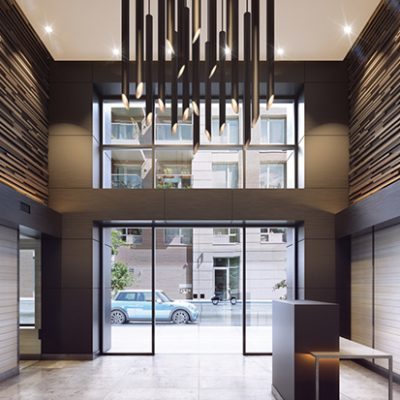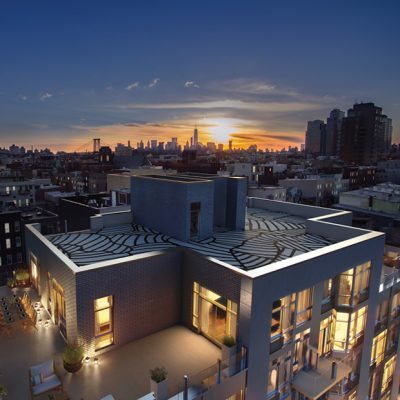
A career real estate agent talks condos vs. co-ops, new hoods to watch, and Williamsburg’s latest luxury residence
by matt Scanlon
Deborah Rieders laughed quietly when we informed her of an unofficial title she was offered in a 2014 article in observer.com. As part of a list of borough movers and shakers, she was dubbed nothing less than “The Neighborhood Maker,” and the story went on to say that, “No broker has had a bigger role in Brooklyn’s transformation than Corcoran’s Ms. Rieders.”
“Well, I’m not going to argue with that,” Rieders responded with a smile. “Actually, I will; there are a great many people in the real estate business who share credit for the amazing ascendance of Brooklyn’s marketplace, so I certainly can’t take sole responsibility. Nice of them to say though.”
The list of properties the longtime Corcoran agent is representing does seem as though she’s taking a firm hand in at least one sector of the market: high-value properties. There’s a condo at 360 Furman Street (#205–$4,995,000, 5 beds, 4 baths), a townhome at 417 Sackett Street ($4,950,000,
6 beds, 4.5 baths), another Sackett Street townhome at #319 ($3,750,000, 4 beds, 3 baths), a house at 546 Court Street ($3,500,000, 5 beds, 5-plus baths)…the list stretches into the multiple dozens, and is an encapsulation of the magic carpet ride homeowners have experienced over the last ten years in the city’s most populous borough.
A native of Massachusetts, Rieders moved to the city for college, and never left. (“I’d tell you how long I’ve been here, but that would date me in a way that makes me a little uncomfortable,” she demurred.) It quickly becomes clear that to simply refer to her as a property representative would be a decided underestimation of what she describes as “…a day so busy that there just isn’t a whole lot of time left to myself that doesn’t involve the real estate business. I work with buyers, absolutely, and sellers, but also with developers, and also I help design units and townhouses from the ground up, so I’m not just working on the transactional side of things, but bigger picture design perspectives…design and marketing. Plus new development and resale. It’s a busy day.”
Asked about a peculiarly New York City percentage of condos versus coops, Rieders detailed a history in which grand co-ops were constructed in areas of the city like Brooklyn Heights and Park Avenue in the 1920s and 30s, but the majority of such ownership structures were an evolution from their rental apartment origins.
“The majority of co-ops became coops because they were first rental buildings, and eventually shareholders purchased the building from the landlord because the landlords were often not doing their job taking care of the buildings properly,” she explained. “Condos really started in the 80s in the city. No one’s building co-ops anymore, though; there hasn’t been a new co-op since the early 90s, and if anyone’s going to do anything, they’re going to build a condo from the ground up or they’re going to convert a building into condos.”
Rieders pointed to Sunset Park and Bay Ridge as markets evolving with particular rapidity, which evolved into a discussion of what neighborhoods, if any, have yet to be explored, or are available for people of less exalted means.
“Places like Brownsville and East New York have a lot of fascinating potential, and I know the mayor has many plans in store to add amenities to those areas, which contain a fair bit of public housing,” she said. “The market is a challenge for new buyers, to be sure, but there will always be people who want to be here, regardless of their income, because this is the most exciting city in the world. They’ll figure scrappy ways to live, and inevitably wind up discovering new neighborhoods no one even realized were there…then transforming them. The city can’t exist on just the very wealthy, and it won’t. People find a way.”
Corcoran Group Real Estate
1 Pierrepont Plaza / O: 718.923.8001
M: 917.494.2503 / corcoran.com







